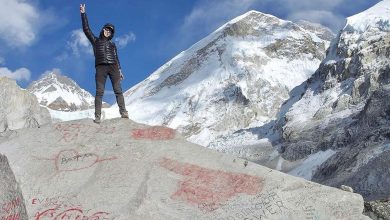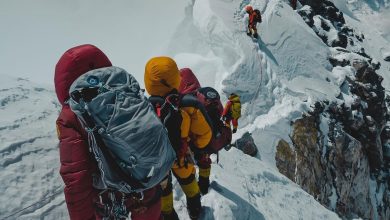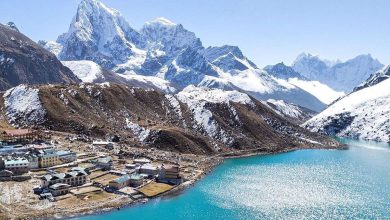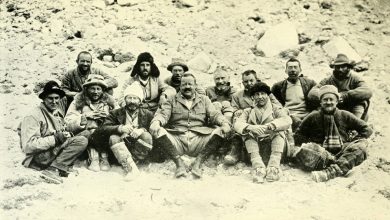Everest Base Camp Trek in November

Everest Base Camp Trek, one of the most popular treks, has numerous things to offer you. This journey has everything from stunning views of the magnificent mountain peaks to ancient culture and tradition with a harmonious and hospitable environment. Mount Everest, Lhotse, Cho Oyu, Nuptse, and Ama Dablam always welcome you with a warm heart but cold temperature.
The Everest Base Camp Trek is a dream adventure for many trekkers and outdoor enthusiasts. Since the trek has several sightseeing opportunities and adventures, it is one of the popular locations for trekkers. But while it seems popular among the trekkers, proper plans and strategies should be given since it has many drawbacks and challenges. Choosing the right time to embark on this journey is one of the crucial things. It not only makes your trek enjoyable but also safe and secure.
First, November falls under the peak trekking season, Autumn, bringing stable weather and climate with mild temperatures. There are also several other reasons to trek in November since it has many green flags. Here, we will discuss why trekkers are recommended to trek to the Everest Base Camp in November.
Why Everest Base Camp Trek In November?
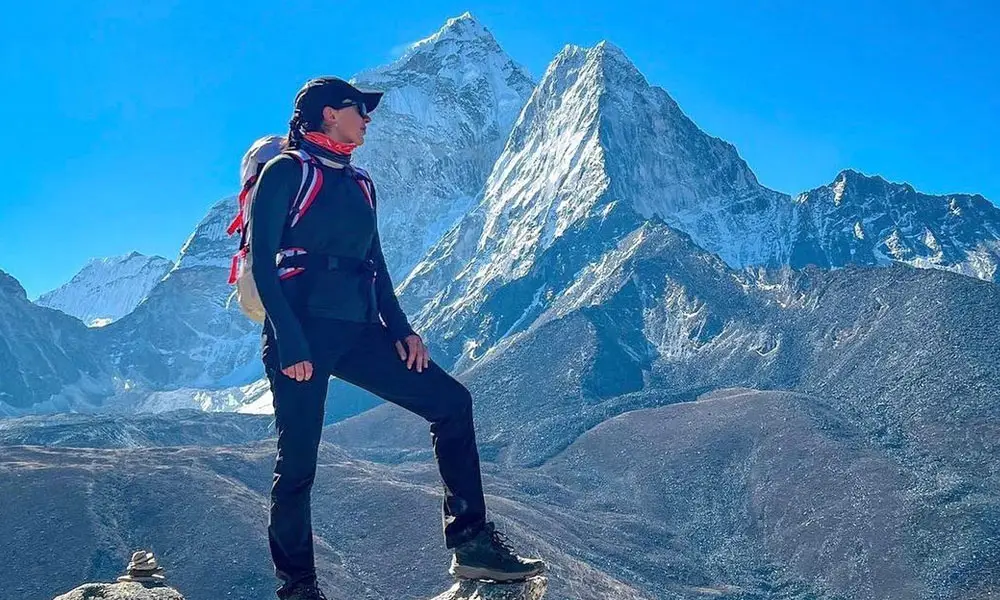
Ideal Weather Conditions
Weather is one of the primary reasons to choose November for embarking on the Everest Base Camp Trek. As mentioned above, November falls under the Autumn season, which comes after the end of the monsoon in Nepal. So, while you trek in November, there is very little chance of rainfall in the Everest Region. Less rainfall means less chance of dealing with natural hazards like landslides and floods.
Similarly, the skies get cleared this month, offering trekkers panoramic views of the Himalayas. Trekkers can get in touch with the lush views of Mount Everest, Ama Dablam, Cho Oyu, Nuptse, and Lhotse. The trails are usually dry and crisp, making navigation safer and sound.
Weather Conditions in Everest Region:
During November, the temperature starts getting cool around the Everest Region as it is the last month before winter arrives. However, the temperature at lower altitudes like Lukla and Namche Bazaar is moderate.
The average temperature of Lukla at 2,860 meters above sea level will be anywhere from a maximum of 12.2°C to a minimum of 6.5°C. High-altitude places like Lobuche, at 4,950 meters above sea level, might possess harsh temperature that fluctuates between -5.5°C and -2.8°C.
| Lukla (2,829 m) | 6.5°C | 6.5°C | 12.2°C |
| Namche (3,463 m) | 2.9°C | -3.4°C | 9.2°C |
| Dingboche (4,483 m) | -2.9 °C | -11°C | 5.3°C |
| Lobuche (4,910 m) | -5.5°C | -13.8°C | 2.8°C |
| Gorak Shep (5180 m) | -6.6°C | -14.9°C | 1.8°C |
Trekkers must be very careful while preparing for the Everest Base Camp Trek in November. The packing list should be very weather-friendly, and preparing for the night around Everest Base Camp Region is essential.

Spectacular Views
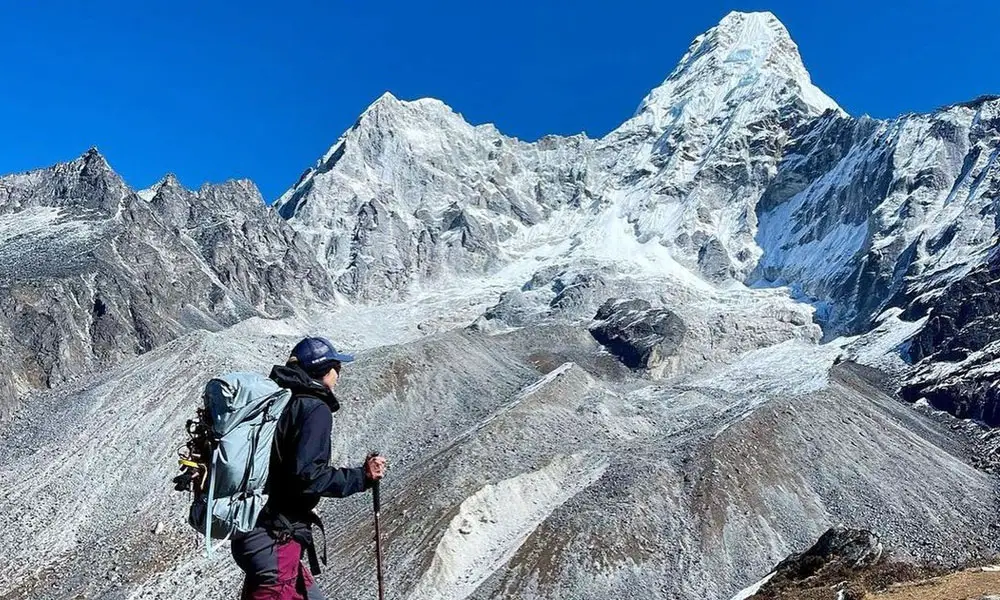
Everest Base Camp requires no explanation when it comes to the spectacular views for sightseeing. The mighty peaks of the Mahalangur Range, green forests, hills, traditional villages, cultural landmarks, and terraced fields are some of the breathtaking aspects of this region.
Trekkers can delve deep into these aspects during November as the weather gets cooler. The skies get clear with fewer clouds, offering trekkers a great gateway to cherish the beauty of the Everest Region. The panoramic views of Mount Everest, Cho Oyu, Ama Dablam, and Lhotse are never to miss during this trek.
Similarly, the crystal clear water of the Bhote Koshi River, Imja River, and the suspension bridge above them are very attractive. In addition, the Buddhist monasteries at Tengboche and Pangboche and the waterfalls and streams that lift the green vegetation of the surroundings are worth watching.
Trekkers can have clear views of Khumbu Glacier and Icefall as they hike up to the higher altitude. The majestic peaks, green hills, and monasteries are all on the way to soothe your trek with amazing views.
Less Crowded Trails
Compared to the peak trekking seasons of Spring (March-May), November is far less crowded. Also, compared with the other months of Autumn, like September and October, the Everest Base Camp Trek Trail gets less traffic.
The first reason is that November is the last month of Autumn, and the weather is changing. Second, the temperature around Everest Region starts to cool down, and it might be challenging for trekkers to embark on low temperatures. Low temperature is also one of the key reasons to make trekkers suffer from Altitude Sickness and difficulty breathing.
On the positive side, less traffic on the EBC Trail means you will have a more tranquil and peaceful experience during the trek. With fewer people on the trail, you can easily book accommodations in hotels and tea houses. And there might not even be a need for reservations. This allows you to easily have an enhanced and relaxed trek to Everest Base Camp.
Vibrant Rhododendron Blooms
November is a month when different species of Rhododendron start to bloom in the Everest Region. The rhododendron trees start to get the buds on it, and the full bloom begins in late November and stays until the first phase of Spring.
Sagarmatha National Park, where the Everest Base Camp lies, is rich in natural vegetation, with more than 10 species of Rhododendron in this area. So, trekkers will find it amusing to trek during November. The combination of snowy peaks in the backdrop and colorful rhododendron forests in the foreground creates a visual spectacle that photographers and nature lovers will appreciate.
Clear and Safe Trails
We have already mentioned that the EBC Trail during November is less crowded. This already means that the trail will be clear and safe. First, the trekking trails in the Everest Region are usually well-maintained, but different climate conditions might have changed the shapes and being of these trails.
But November has favorable weather conditions, and there is less chance of rainfall in this area. This makes the trail dry and crisp, offering trekkers a strong grip on the ground. While the navigation becomes safer, the chances of getting injured during the trek are reduced. This makes it a safer choice for trekkers, especially those new to high-altitude trekking.
Festivals and Cultural Experiences
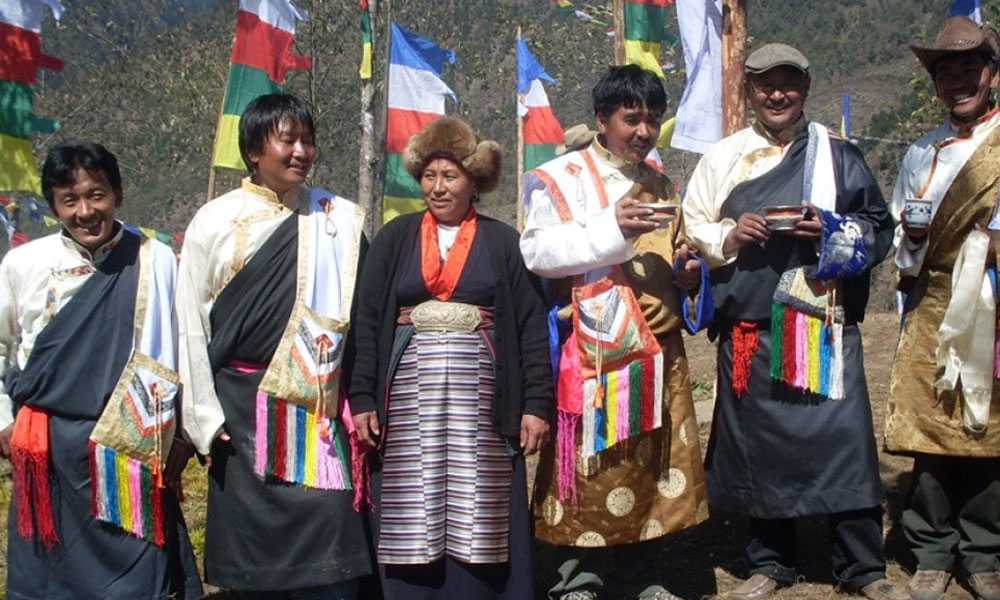
There is a bare minimum chance of the festivals like Tihar and Chhat falling in November. Especially during the leap year, celebrations and festivals like Dashain and Tihar get pushed backward than usual.
Dashain does not fall in November, but Tihar has a great chance during the leap year. In that case, trekkers can delve into the local cultural experiences. During Tihar, the country comes alive with vibrant decorations, traditional rituals, and the lighting of oil lamps. This festival provides a unique cultural insight and allows trekkers to interact with the local communities.
Trekkers can groom with the hospitality of Sherpa people in the Everest Region and converse with them to learn more about their culture, tradition, customs, and lifestyle.
Moreover, one very popular festival in the Everest Region is celebrated in November. Mani Rimdu is a festival celebrated by the Sherpa community in this area at Tengboche Monastery. As Sherpas follow the Lunar Calendar, the dates of this festival might change, but most of the time, it falls in November. It is one of the longest-celebrated festivals in Nepal, lasting for 19 days with 3 days of major celebration.
Preparation and Safety Tips
Everest Base Camp Trek is a beautiful journey, but it comes with several challenges. So, several preparations must be made before this journey begins. Here are some lists of preparations and safety tips for you!
Physical Fitness:
Before embarking on this challenging trek, you should know you are not going on a single-day trek. The Everest Base Camp trek requires at least 14 days to complete. Similarly, you must acknowledge that the trails of the EBC are rugged and uphill, which requires a high physical strength. On top of that, the itinerary features at least 5 to 6 hours of total trek daily.
Now imagine how much of your physical strength is required to trek to the Everest Base Camp. So it is very essential to be in good physical shape. Trekkers are recommended to engage in cardiovascular exercises and increase their strength via hiking, running, and cycling. It is very important to incorporate altitude training as well.
Acclimatization:
Acclimatization is key to survival in the Everest Region. Everest Base Camp Trek takes you to 5000 meters above sea level all the way from Lukla to the Base Camp itself. And such high-altitude locations are very prone to altitude sickness. Since the air is thinner with high pressure and the oxygen level is low, altitudes above 5,000 meters are usually considered dangerous to trek.
Here, acclimatization comes of great use to adjust your body. Acclimatization comprises gradual ascent with a key focus on hydration and nutrition. Similarly, trekkers are recommended to trek high and sleep at lower altitudes. There are two places where you can acclimatize during the EBC Trek: Namche Bazaar and Tengboche.
There are several ways to get rid of altitude sickness, and acclimatization is one of them. Some trekkers even prefer using a medicine named Diamox to reduce the chance of getting caught with AMS (Acute Mountain Sickness), HAPE (High Altitude Pulmonary Edema), and HACE (High Altitude Cerebral Edema).
Gear and Equipment:

While you embark on the EBC Trek in November, you must consider the weather pattern in the region and prepare your gear accordingly. Without proper gear, it is very challenging to hike through the remote trails of the Everest Base Camp. Here are some of the required Gear and Equipment for Everest Base Camp Trek:
- Warm clothing, including thermal underwear, fleece, down jackets, and waterproof outer layers.
- Comfortable, waterproof, and insulated hiking boots with good ankle support.
- A warm hat, gloves, and sunglasses with UV protection.
- Spacious backpack with a rain cover.
- Sleeping bag rated for cold temperatures.
- Trekking poles.
- Water purification tablets.
- First-aid kit, including altitude sickness medications, bandages, pain relievers, and personal medications.
Besides all these, several safety tips are essential before you embark on the Everest Base Camp Trek. Have a look:
Weather Awareness:
Trekkers must be very aware of the weather and climate conditions of the Everest Region before they embark on the journey. Usually, the weather conditions of the Himalayas are unpredictable, and they can change very rapidly.
It is recommended to keep an eye on local weather forecasts and pack accordingly, even for sudden weather changes. You must follow the instructions of your guides and local authorities regarding weather-related decisions. Forceful trek during bad weather might sometimes lead to mishap, injury, and even death.
Hydration and Nutrition:
Everest Base Camp Trek is a multi-day package. While physically draining, trekkers must be very careful about their health and well-being during the journey. Since the long treks in the rugged and uneven terrains are very challenging, it is recommended to have physical energy to tackle them.
But how can that be done? It’s simple: focus on proper nutrition and drinking plenty of water. It will help you gain energy and avoid altitude sickness and other related illnesses. Besides, it is very essential to avoid alcohol and caffeine during this trek.
Slow and Steady Pace:
One of the important things to understand is that the slower you hike uphill, the more safe you become. In November, the temperature starts to fall, and with the fall of temperature, our body needs to work accordingly to sustain the environment.
We walk with physical exhaustion, and our body needs more oxygen while trekking. It’s the reason why we have fast breathing. But this can lead to difficulty in breathing and even altitude sickness as we might not get enough oxygen for our bodies.
So, the key to avoiding altitude sickness is a gradual ascent. Walk slowly and steadily, and take frequent breaks to rest and acclimatize. Listen to your body, and if you experience symptoms of altitude sickness, descend to a lower altitude immediately.
Accommodation and Tea Houses:

This might not be an issue while trekking to Everest Base Camp in November. But still, many trekkers think it is a month when there is less crowd on the trails. So it might be packed. In such cases, finding accommodation services en route to Everest Base Camp is challenging. It is essential to book your accommodation in advance so that you can secure your stay.
If you are looking forward to staying in a tent, it might not be a problem. However, staying in a tent in November might not be wise.
Stay Warm and Dry:
By the end of November, the winter season almost enters Nepal, and the situation in the Everest Region becomes harder than you can imagine. Cold temperatures bring several hazards, including cold-related illnesses, frostbite, difficulty breathing, etc.
It is essential to be safe first, so dealing with the winter becomes our first mission. Trekkers are recommended to dress in layers to trap heat and make sure your clothing remains dry. Carry extra clothing in case of unexpected rain or snow.
Altitude Sickness Awareness:
Altitude sickness is no joke during the Everest Base Camp Trek. It might not only deteriorate your trekking campaign but also take your life. So stay awake for symptoms like headaches, nausea, dizziness, and shortness of breath. If you experience these symptoms, descend immediately and seek medical attention if necessary.
Communication:
Communication is key, and it is not said for no reason. It can be a lifesaver in emergencies, especially in high-altitude locations like Base Camp, Gorakshep, or Kala Patthar. Packaging the satellite phones or GPS System is essential so that it comes into action during your need. Moreover, it is also very important to inform your close friends and family about your trek, and most importantly, taking a guided trek is recommended.
Respect Local Culture:
Sherpa people mostly inhabit the Everest Region. They are an indigenous people of Nepal with their own culture, language, and code of conduct. Buddhism is the main religion they follow in Everest, and it features several monasteries, chortens, and gompas that offer a harmonious and peaceful environment.
It is very essential to be respectful of the local culture and traditions of the Sherpa people. Especially before entering the premises of Monasteries and taking pictures of the landmarks and people, you must ask for consent. Similarly, dress modestly and remove your shoes before entering the monasteries.
Conclusion
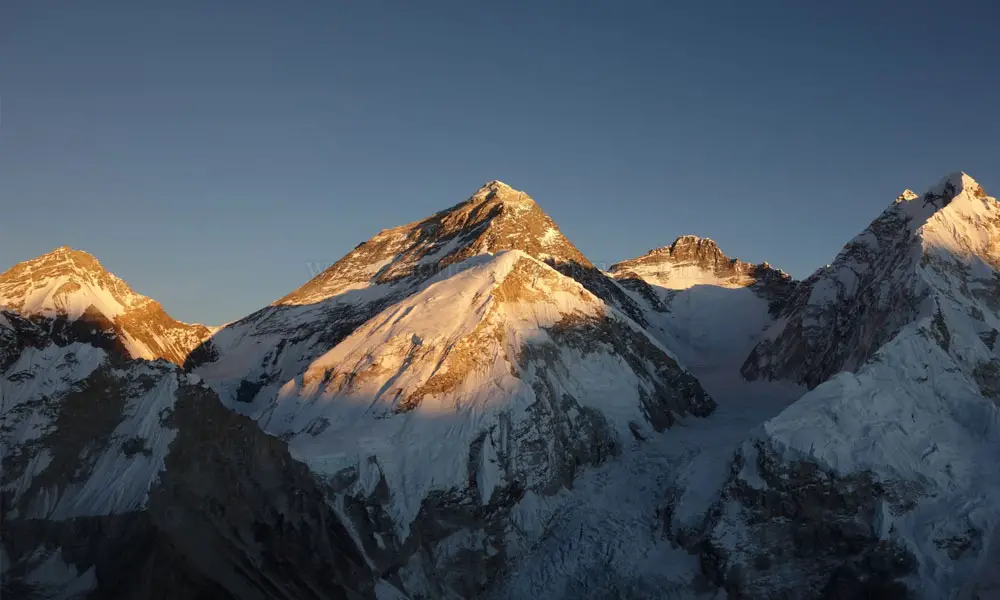
The Everest Base Camp trek in November is one of the most remarkable packages to take in Nepal. Since it’s the last month before winter comes in Nepal, it is only the last chance of the year to take on this journey. And think about the richness you will delve into the magnificent peaks of Mount Everest, Ama Dablam, Cho Oyu, and Lhotse await you.
While you cherish the adventure and beauty of the Everest Base Camp, it is also essential to be safe. Trekkers must follow the standard guidelines and must be on a guided trek. Acclimatization, physical fitness, weather awareness, and safety tips must be prioritized for this trek.
So, suppose you are looking forward to Everest Base Camp Trek. In that case, we recommend you take it in November as it brings a wide array of natural richness, cultural immersion, and enjoyable time to your table.
You may also like:
